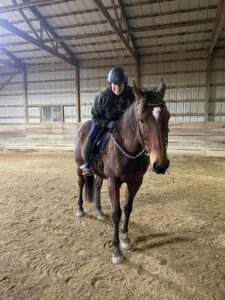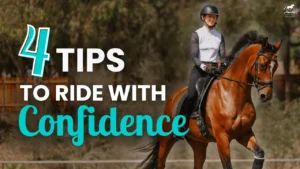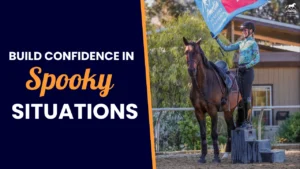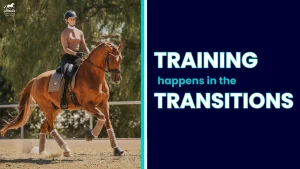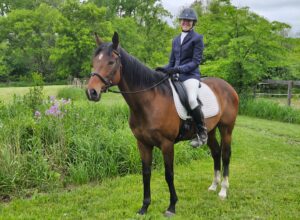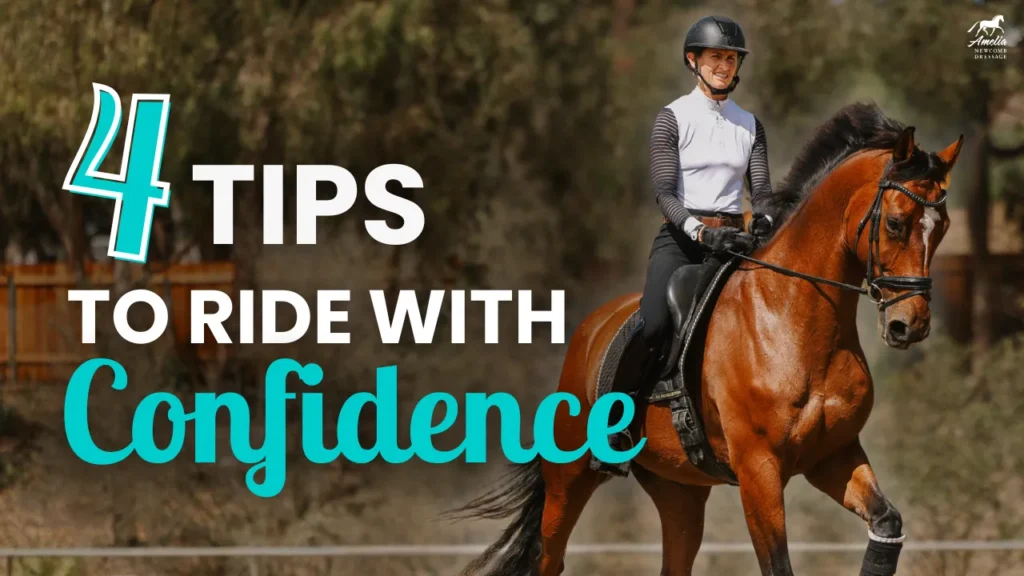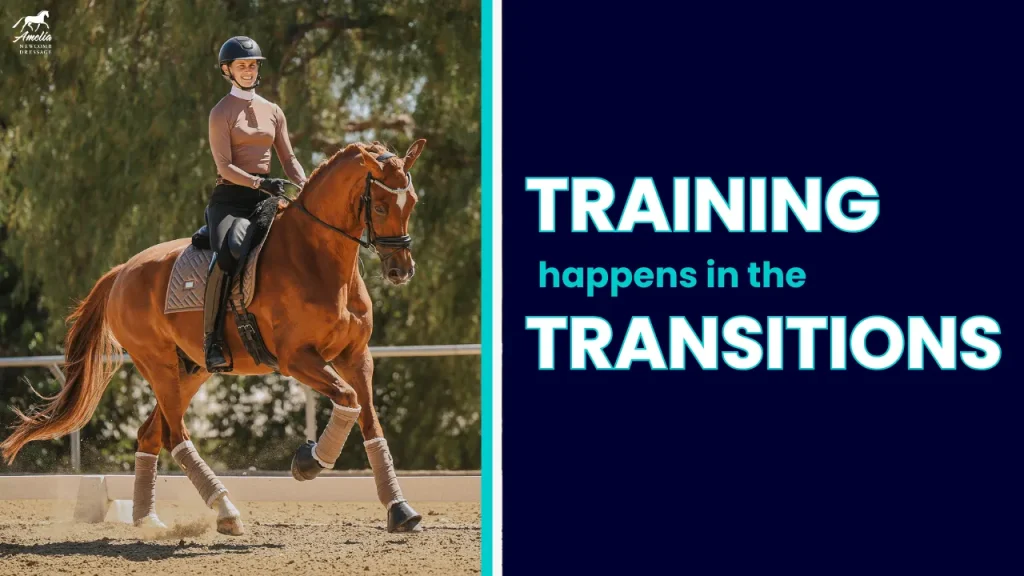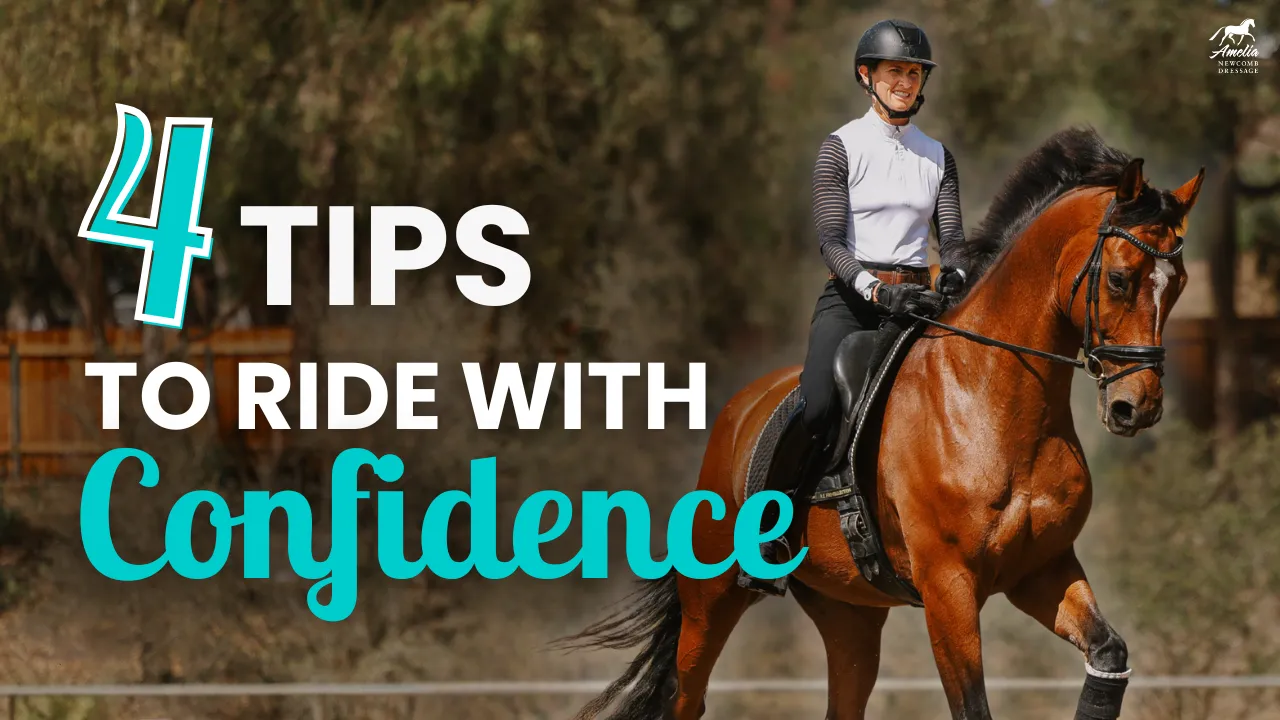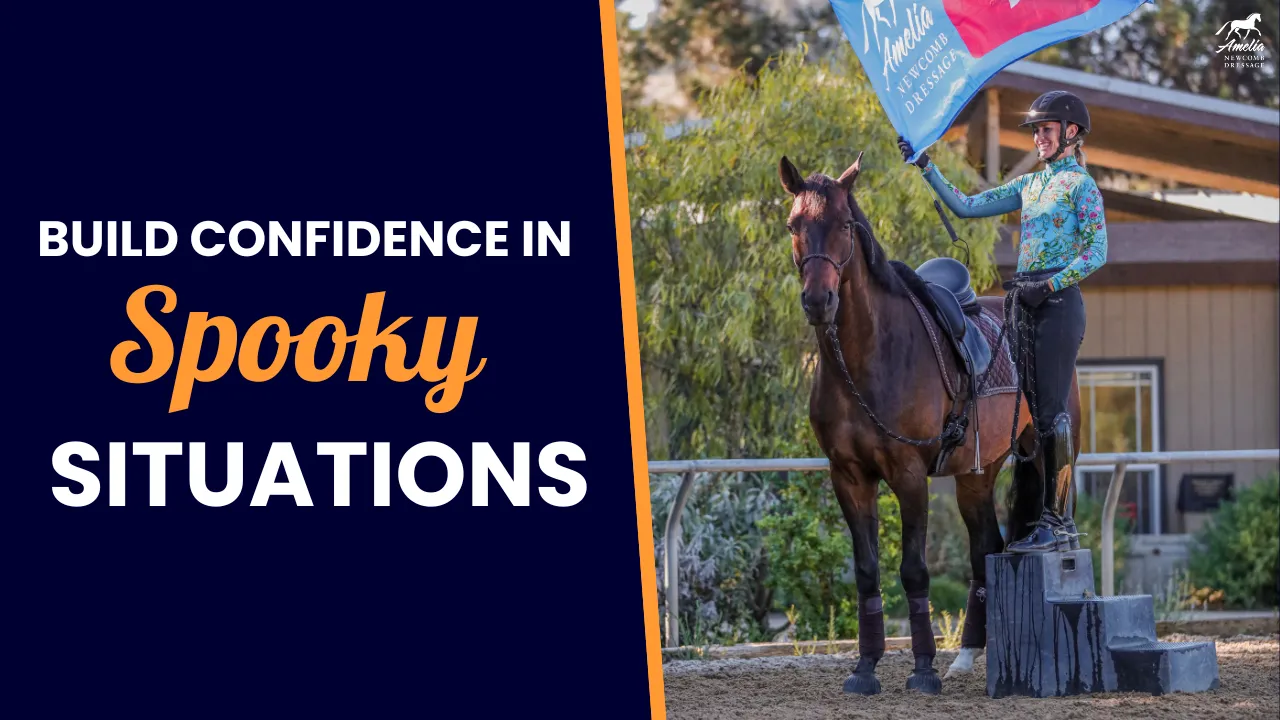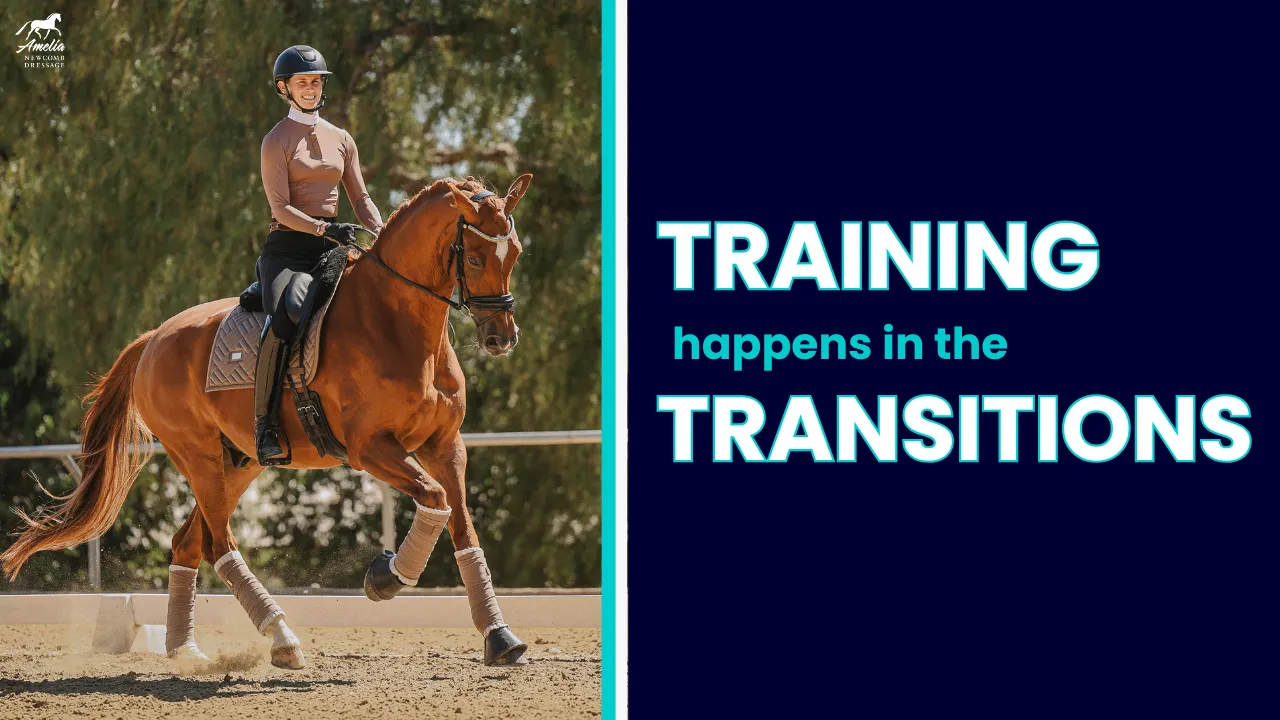Counter canter is a test of balance, straightness, and connection. It first appears in First Level Test 3 and becomes increasingly important through Second Level, Fourth Level, and Prix St. Georges. But the key to introducing the counter canter is to introduce it step-by-step and set your horse up for success. The worst thing you can do is ask for too much too soon and ruin your horse’s confidence. In this video, my husband, Germán, and I demonstrate how to introduce counter canter to a young horse by using simple, progressive exercises so that she can be successful and find her balance in the counter canter.
Start with the Prerequisites:
- Walk-trot transitions: Your horse should go forward easily from your leg and maintain connection. These transitions will help prepare your horse for the canter transition.
- Trot-canter-trot transitions: If your canter transition feels unbalanced or your horse pops their head up, repeat the transition until they step through from behind and stay soft in the connection. Don’t move on until this feels easy.
How to Set Up Counter Canter:
- Change of Lead Through the Trot: Ride across the diagonal, transition to trot, then pick up the opposite lead. This teaches your horse there’s a left lead and a right lead—not just “canter now.”
- Lengthen the Canter, Then Circle: Ask for a slight lengthening on the long side, then ride a balanced 15-meter circle. This develops control and adjustability in the canter and helps you rebalance after forward effort.
- Ride Straight on the Quarter Line: Turn off the rail and ride straight down the quarterline. This helps the horse learn to stay balanced without relying on the wall for support. Repeat on both reins.
- Go from Rail to Quarter Line and Back: Once your horse stays straight on the quarterline, go from the rail to the quarterline and back again. Pay attention to shoulder control on the return. Don’t let your horse fall back to the wall—ride it deliberately.
Each of these builds balance, understanding, and straightness—all necessary for counter canter.
Be Patient and Progress Gradually
If your horse breaks in the counter canter or rushes back to the rail, don’t worry. That’s just information. Break things down and go back a step. One of my favorite sayings is: “If it happens once, shame on your horse. If it happens twice, shame on you.” Your job is to set them up better next time.
Always finish with a walk break and reward your horse for progress. Start with a few strides and build from there.
Counter canter doesn’t have to be stressful or confusing. When introduced thoughtfully, it can become one of the best exercises for improving your horse’s balance, connection, and straightness. Break the steps down, reward generously, and trust the process.
Happy Riding!
Amelia
P.S. Have you seen my most recent free resource: Analyze your ride with my Contact & Connection Quiz. It’s quick and will guide you to a tailored training plan that fits your horse’s needs.
